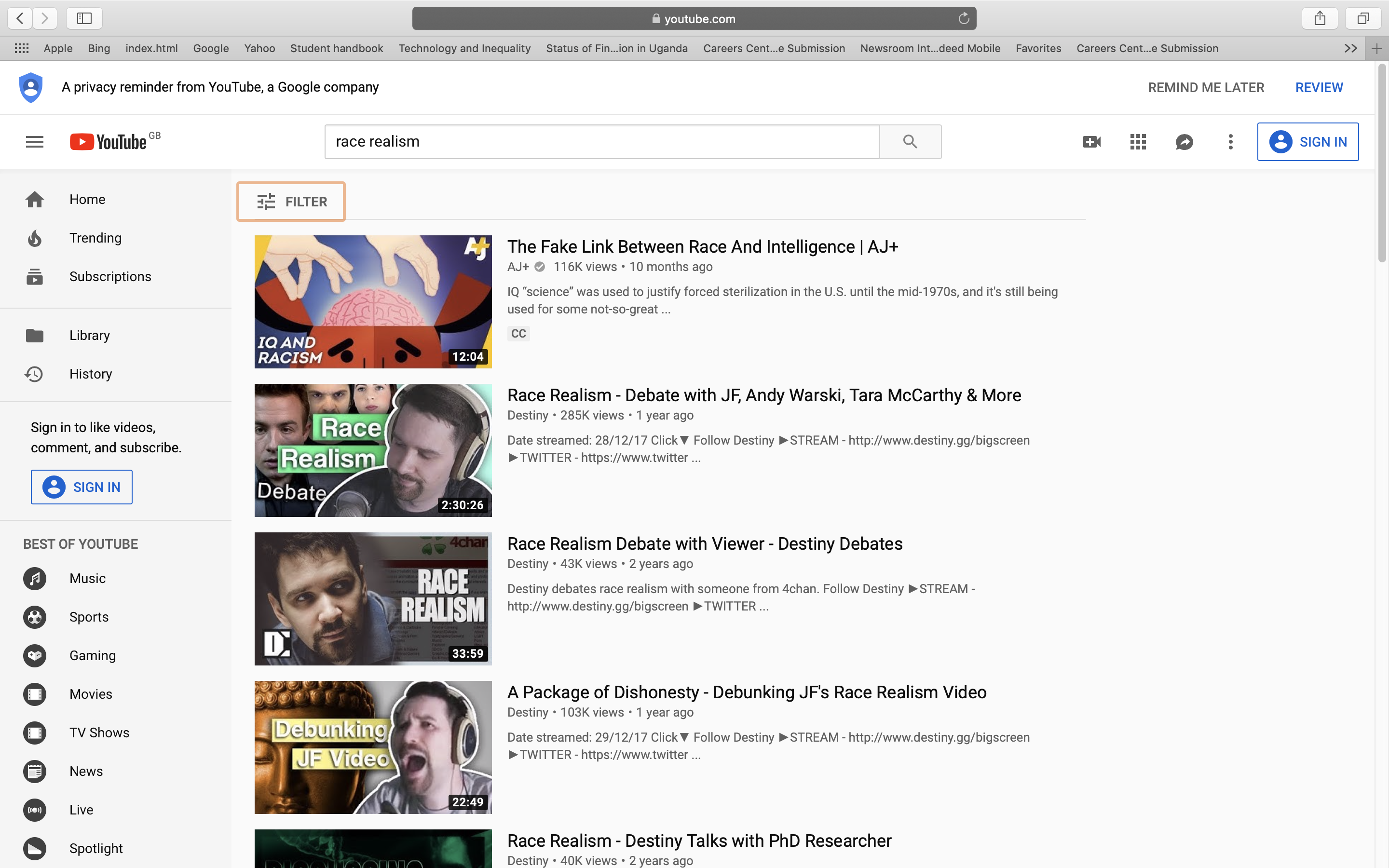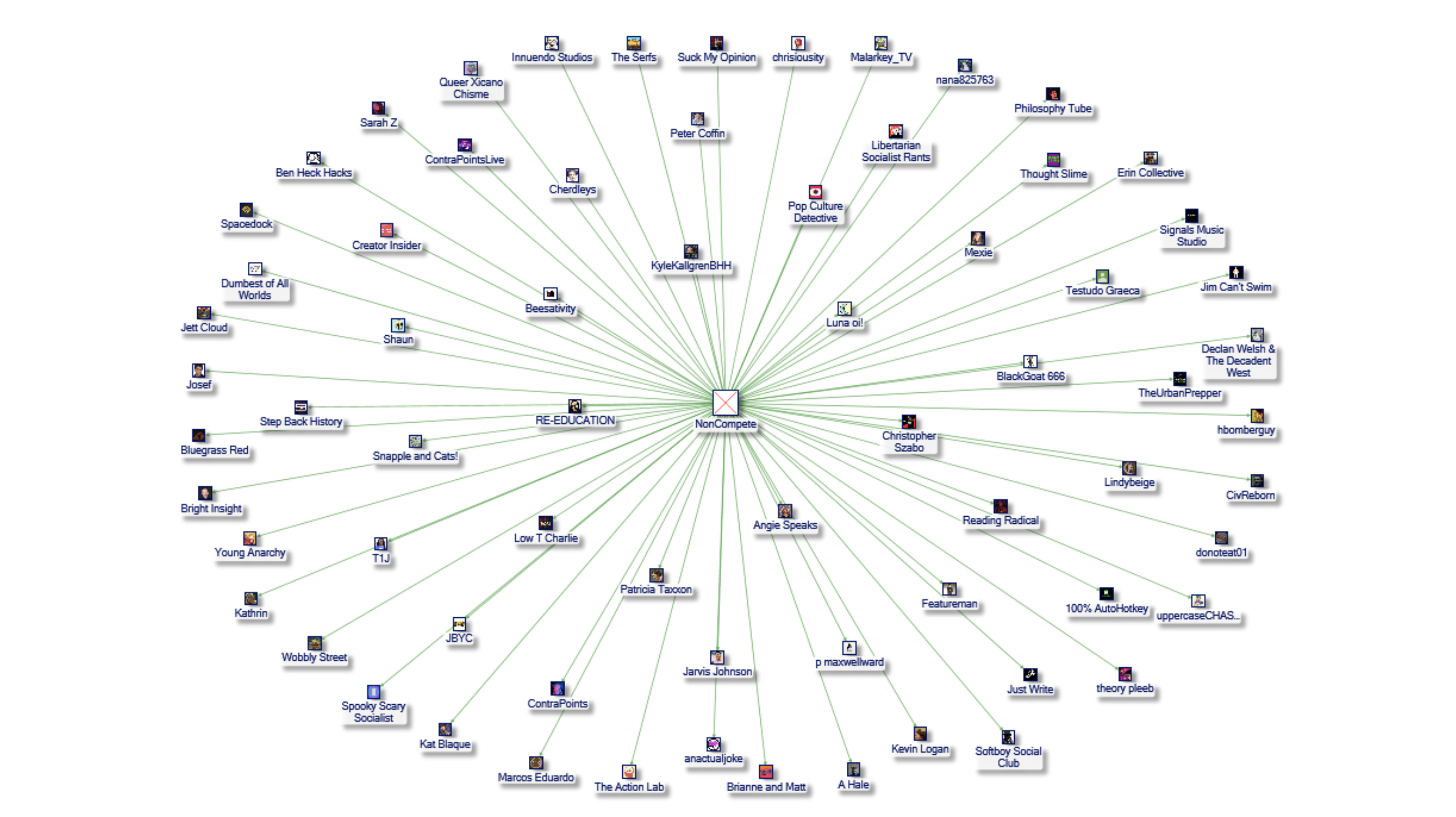The right-wing has long had a stronghold on political punditry on YouTube.
Will a new crop of progressive content creators upend that dynamic?
For a long time, the far-right was regarded as the dominant political community on YouTube; there was ostensibly no equivalent left-wing rebuttal to content being churned out by by conservative provocateurs.
“There are countless other forms of political expression on YouTube, but no bloc is anywhere near as organised or as assertive as the YouTube right and its dozens of obdurate vloggers,” John Herrman wrote in The New York Times Magazine in 2017. “Nor is there a coherent group on the platform articulating any sort of direct answer to this budding form of reaction — which both validates this material in the eyes of its creators and gives it room to breathe, grow and assert itself beyond its immediate vicinity.”
Over the past two years, however, a new movement has arisen and begun to gain traction on YouTube.
Dubbed LeftTube — or sometimes BreadTube, as a reference to a 1892 book by the Russian anarcho-communist Peter Kropotkin entitled “The Conquest of Bread” — this community of creators is trying to subvert the right-wing’s long-running ascendancy on the video platform.
The goal of creators such as Natalie Wynn — better known online as ContraPoints— is to deradicalise the murky, disinformation-infested side of YouTube.
“One thing the right wing has done pretty effectively in the last few years is they've managed to frame the discussion as a kind of puritan, moralistic, sermonising left versus a kind of edgy, rebellious, punk-rock right,” Wynn told Vice News. “And I refuse to allow them to get away with that."
Wynn combines her postgraduate philosophy education and flair for the flamboyant to create half-hour long video essays that directly address frequent talking points of far-right creators — including free speech, race, sexuality and gender politics. She tries to reframe the debate around these issues in a way that “makes [the far right] reveal their puritanism and their phobias," wrote Elle Reeve.
ContraPoints’ video addressing the topic of “involuntary celibacy” is one of her most popular, garnering nearly three million views to date.
Well-aware that alt-right content creators try to spread their ideology by gaming the recommendation algorithm, Wynn endeavours to create educational and entertaining videos that mimic some of their tactics.
“I didn't want to empathise, I wanted to understand,“ she told the New Yorker.
Having watched and analysed a fair amount of alt-right YouTube content, Wynn crafts fictional personas that typify "thought leaders" on the right and engages in role-play scenarios that aim to illustrate the holes in their reactionary logic. She also takes a critical stance when reflecting on her own political leanings, not afraid to call out instances of injustice and hypocrisy on the left.
Wynn’s tactics have been proving effective. Over the past year, her subscriber numbers have increased more than threefold.
Leftist YouTube channels have seen a spike in audience growth over the past year.
“She’s known as someone who speaks well to the alt-right, or is convincing,” said Zoë Glatt, a PhD researcher at the London School of Economics who is conducting ethnographic research with YouTube content creators. “I think part of that is [because] she comes from a philosophy background and uses analytic philosophy quite a lot. And I think analytic philosophy is very masculine, it’s a very masculinist pursuit usually. She’s good at speaking to those people because she uses the kind of logics that are convincing if you’re convinced by that kind of argument, plus [the videos] are entertaining.”
Wynn takes seriously the way in which ideas spread on the internet and acknowledges the increasing role of platforms like YouTube in shaping public opinion on political issues. She says she intentionally targets young white men who are susceptible to being led down an extremist rabbit hole by the YouTube algorithm.
“I sometimes imagine a hypothetical 19-year-old boy looking for answers,“ Wynn told the New Yorker. “He knows that life in this late-capitalist wasteland feels off, that something in his life is missing. What's he going to find on YouTube that can explain that void to him? Well, there's mainstream stuff, which he's likely to tune out. And then there's a whole lot of fascist alt-right propaganda and Alex Jones-style nut-baggery. And then there's me.“
Creators like ContraPoints are increasingly credited for helping people break out of the vortex of right-wing YouTube.
In March, a 26-year-old named Caleb Cain posted a 38-minute-long video detailing his five-year descent into the far-right reactionary movement, and explaining why he decided to swear it off.
Cain downloaded his entire YouTube history — a log of more than 12,000 videos and 2,500 search queries dating back to 2015 — and shared it with Kevin Roose of the New York Times, who used the data points to illustrate his indoctrination into and emergence out of the extremist online community.
Just in the span of a 48-hour period in 2015, Cain watched videos featuring punditry from alt-right creators Stefan Molyneux and Paul Joseph Watson, conspiracy theories, graphic violence, anti-feminism, and explicit racism, as well as content from channels that have since been banned.
“To [Cain] all of this felt like forbidden knowledge — as if, just by watching some YouTube videos, he had been let into an exclusive club,” wrote Roose.
After four years of right-wing fodder, a different kind of content began appearing in his recommendations — videos by left-wing creators like ContraPoints, Philosophy Tube and Destiny, mimicking the aesthetics of alt-right YouTube. He found them to be persuasive enough to change his mind and online habits.

LeftTube creator Destiny uses tactics of the alt-right to debunk the racist concept of “race realism”. Screenshot of search captured on cookie-less browser in August 2019.
Now, Cain makes his own videos under the pseudonym Faraday Speaks, in which he tries to draw attention to the issue of extremism on YouTube.
“Natalie and Destiny made a bridge over to my side,” Cain told the Times, “and it was interesting and compelling enough that I walked across it.”
Roose wrote that he has often encountered stories like Cain’s about aimless, young, usually white men, often interested in video games, who “[visit] YouTube looking for direction or distraction and [are] seduced by a community of far-right creators.” The common thread in most stories, he said, is the “up next” recommendation algorithm.
Becca Lewis, a PhD researcher at Stanford University who authored the Data & Society report about the Alternative Influence Network, thinks the rising popularity of left-wing content creators owes to the cyclical nature of YouTube’s remix culture.
“I think [left-wing YouTubers] use a lot of the same microcelebrity and influencer strategies that the far-right groups do, and adopting political messaging and bringing them into a more leftist fold,” she said.
Unlike many members of the AIN, who upload as frequently as several times a day, LeftTube creators tend to put out “hyper-produced” content that involves weeks of research and scripting — and, at times, costumes and sets.
“[ContraPoints] is interesting algorithmically, because the advice that YouTubers get from all directions is that you should be uploading regularly, as often as possible, definitely once a week if not more,” Glatt said. “...She uploads once a month because she wants to make high-quality content and she can’t just churn it out. So, technically in terms of the timelines, algorithmically, she shouldn’t be doing that well. But she just makes really good content so people come to her.”
It would be naive to hail the rise of LeftTube as a solution to YouTube’s radicalisation problem, given the complex emotional, economic and political factors that underlie the ebb and flow of political factions online. But perhaps it is a step in a positive direction.

Network graph of channels related to NonCompete, illustrating his connections to other members of the "LeftTube" community, such as ContraPoints and Philosophy Tube. Compiled using NodeXL Pro.
“Unfortunately the alt-right got a big head start on finding ways to appeal to white men,” Emerican Johnson, also known as Non-Compete, told the Times. “We’re late to the party. But I think we will build a narrative that will stand strong against that alt-right narrative.”
READ MORE:
How YouTube incentivises the creation and spread of conspiracy content
"One of the most powerful radicalising instruments of the 21st century"